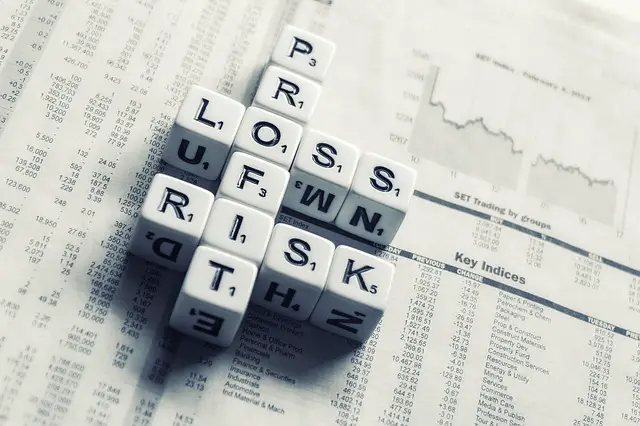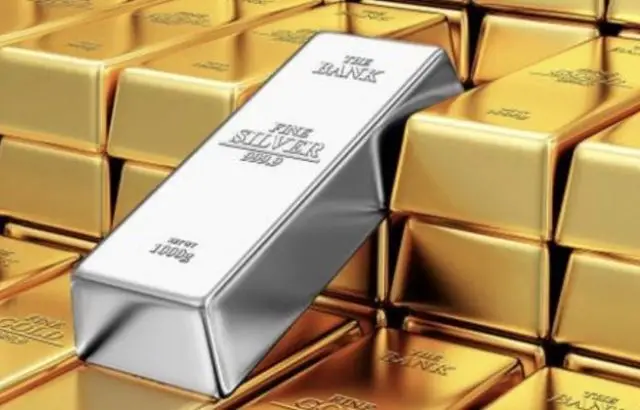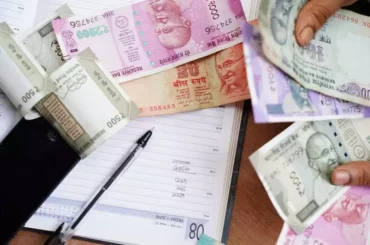Information presented on this web page is intended for informational and educational purposes only and is not meant to be taken as legal, financial, investment or tax advice. We do not accept any responsibility for any trading or investment related losses. Please review our disclaimer on before taking action based upon anything you read or see.
The world of investments can be confusing and intimidating. When you’re just starting, it’s easy to feel like you don’t know enough to venture out independently. Fortunately, investing in the stock market doesn’t require a fortune or extensive knowledge of economics. It only takes a few simple principles and a fair amount of common sense.
Unfortunately, that doesn’t make it any less difficult for most people to understand. In general, investing offers a great way to build wealth over time. But like anything else, it also comes with its risks and rewards. The challenge is figuring out which potential investment opportunities are worth your time and money. If you want to invest without losing too much sleep over it, you should always do your research before putting your money into something.
After all, no one wants to lose money because they invested rashly or ignored sound advice from friends or family members who have more experience than you do. So what are some red flags that might give you pause as an investor? Let’s take a look at why silver is a bad investment:
Why Silver is a Bad Investment
There are many different reasons why you should not invest in silver. Unfortunately, silver prices have risen significantly over the past few years. This article discusses those reasons and why they make investing in silver a bad idea.
- Volatile investment
- No liquidity
- Produces no income
- Dead asset
- It has a low yield
- It is an asset class with high volatility
- No intrinsic value
- Silver is in finite supply
- It has gone down in price recently
- It is a commodity
- Risky investment
- No dividend yield
- Highly speculative
- Negative real return
- It is a finite resource
- It is a monetary metal
- Gold is a better investment for wealth preservation.
- It is a classic bear market investment
- No Hedge Value
- No Long-Term Gain
- The production is limited
- Silver mining companies have a high risk of default.
- It has no tangible asset value.
Now, let’s discuss the above points one by one for better understanding;
Silver is a volatile investment.
Like other commodities, the price of silver is influenced by speculative activity and supply and demand. It is thus a poor choice as an investment. Due to its smaller market, lesser market liquidity, and fluctuating demand among industrial and store of value applications, silver is known for being more volatile than gold. This sometimes results in the market having widely disparate values, which causes volatility.
It is important to understand that silver is a high-risk asset class with a volatile character. It is only appropriate for those with a fundamental knowledge of precious metals and commodities cycles.
Silver has no liquidity.
Investors will have another challenge when they decide it’s time to sell their silver. Silver has a bit of a liquidity hurdle compared to equities, which can be digitally traded in a flash.
You must locate a buyer if you want to sell actual silver. This may be accomplished by working with a broker or on a peer-to-peer basis using platforms like Facebook and Craigslist. In any case, selling silver involves far more difficult than selling a stock investment.
Silver produces no income.
The largest lie about mining precious metals is that silver is a very lucrative commodity. The cost of producing an ounce of silver in monetary terms in 2009 was $0.02, $0.47 in 2012, and $0.25 in 2019, according to the 2021 World Silver Survey. The silver miners won’t make the most money with that kind of cost structure.
Silver is a dead asset.
One of the futures market’s most irrational speculative trading groups is silver. In the silver market, there are moments when volatility increases and the metal simply rests. Many market players think that the transition from silver nitrate-based photography to digital photography caused the asset value of silver to decline.
Today’s silver usage has also been replaced by computers, mobile phones, solar technologies, and other things. From the financial perspective, silver is a commodity that constantly moves with emotion and responds to herd behaviour, which may sometimes cause it to reach ugly lows.
Silver has a low yield.
Bonds are one of many other assets that may be used as a hedge against inflation and volatility since they provide investors with income rather than price growth. Silver investors retain the metal in the hopes that its price will rise, but there is no dividend, yield, or other kinds of income while they do so. Many investors, particularly pensioners and others who rely on income from their assets, are turned off by this lack of yield.
Silver is an asset class with high volatility.
However, silver might seem to investors as a more cost-effective alternative to precious metals. However, the fact that silver is an asset class with considerable volatility may seem a disadvantage. This is due to how much smaller the silver market is than the gold market.
This makes silver more susceptible to price fluctuations than gold. Silver price swings should be less of a problem in the long term. However, investors who want to keep silver need to be ready for its high level of volatility.
Silver has no intrinsic value.
Silver has no inherent worth. They are valued more for their effectiveness as a kind of money and a means of commerce. At first, it could seem strange or even tautological. Gold, however, is more valuable since it has several uses. Due to their inherent qualities, precious metals are goods that work best when used as currency. A quick investigation easily supports the claim.
Silver is in finite supply.
It is a finite resource on the planet, and this is beyond debate. Silver was used as a unit of measurement because it was historically very precious and in low supply. Although it was used in arbitrary units throughout the first millennium of its use as money, silver was the first currency used by humans.
The silver market operates under predetermined physical constraints, and mass balance restrictions apply to mining output. Therefore, society must analyze the security of the long-term supply and the sufficiency of the Earth’s silver deposits. Additionally, the best estimate for the period of the peak in silver output is 2034, with a narrower range of 2027 to 2038. All silver mines will be almost empty and depleted by the year 2240.
Silver has gone down in price recently.
After decreasing by almost 40% from highs in February 2022 and hitting a two-year low, the silver price has declined recently. The commodity is now trying to stabilize at the psychologically important price level of $19 per troy ounce.
The strength of the US dollar has also put pressure on precious metals trades, with the Dollar Index (DXY) falling to a 20-year low in July 2022. As investor interest has decreased, silver has outperformed gold.
According to the Silver Institute, silver will sell on average for $20.80 per troy ounce in 2022, a 5% decrease from 2021.
Silver is a commodity.
Silver is categorized as a commodity as a physical item that is exchanged publicly. Prices of tangible assets often fluctuate against those of stocks and bonds.
For this purpose, when the prognosis for the stock market is bleak, many investors shy away from commodities like silver. This also happens when there is political unrest or an economic downturn. It might be a negative investment since it is affected by many factors, making it difficult to diversify and optimize your portfolio.
Silver is a risky investment.
Silver investment is often a dangerous endeavour. Essentially, you are gambling with your money to either generate a profit or protect yourself against losses. The danger here is that you may never be completely certain how your investment will turn out. Therefore, there is always a chance that things won’t proceed according to schedule. You often lose all of your cash or gains as a consequence.
In essence, every sort of investing in silver has some risk. Even while “silver” is regarded as a “haven” asset. There are still several hazards that every investor has to be aware of.
Silver has no dividend yield.
Dividend investors like gold equities more than silver stocks. Given that a larger proportion of precious metal firms specialize in gold and that most gold stocks pay a dividend, this isn’t particularly unexpected. Comparatively speaking, dividends are now only paid on a small number of silver stocks.
However, it might suggest that investors focus all their emphasis on gold dividends, leaving silver dividend companies in the cold. In other words, given its low yield, trading in silver dividend stocks now may not be a good idea.
Silver is highly speculative.
Like the price of other commodities, speculations and supply and demand impact silver’s price; when the industrial and investment groups anticipate a rise in the price of silver, they make significant purchases, further removing supply from the market and raising demand, which raises the price.
In contrast, investors prefer to sell the metal and take their gains if investors and industry think the price of silver will decline, while industrial purchasers tend to stall their orders to benefit from lower prices in the short term. As a result, prices drop.
In the safe-haven area of their portfolios, silver’s speculative character results in an elevated risk that some investors won’t be willing to accept.
Silver has a negative real return.
Real returns on silver are negative. As a result, many investors shy away from silver. This is also because of the stock market’s unpredictability during downturns. This, however, also implies that silver is susceptible to market impact. Short-term market fluctuations may be brought on by variables, including global demand and economic circumstances. This risk increases if you trade on margin with a silver contract.
Silver is a finite resource.
Sometimes, earth elements and metal ores like silver are also limited resources. This is true since they were created by geological processes that took millions of years to complete. Silver is a finite resource on the planet, and this is beyond debate. Silver is often not a good investment since it is constantly scarce and in limited supply.
Although it was used in a variety of unstandardized quantities throughout the first millennium of its usage as money, owing to its limited nature, silver was also the first currency utilized by humans.
Silver is a monetary metal.
Since silver is a financial metal, it serves as a medium of exchange. Silver has been utilized as money more often than gold. The amount paid cash for an item or service if sold to a third party is its monetary worth.
For instance, the price of physical assets, intangible assets, labour, and commodities is determined by their market worth. Due to being susceptible to declining returns, this often presents a disadvantage for silver.
Gold is a better investment for wealth preservation.
The success of gold in protecting wealth through thousands of generations is the main factor in its significance in the contemporary economy. Silver, however, does not fall within this category. Additionally, many investors retain gold because they believe it will increase their wealth. Unlike silver, which loses its luster over time, gold plays an important role in wealth preservation. Historically, more people have seen gold than silver as a safe-haven asset.
Silver is a classic bear market investment.
When a market sees steady price decreases, it enters a bear market. A bear market may be caused by factors such as a poor or sluggish economy, shocks like pandemics or war, or both.
This is often an unfavourable trait for silver investments. It is considered a bear market when stock values fall by 20% or more from their most recent highs. Consequently, investors lose faith in the market, and individuals begin to express pessimism about the economy and silver prices.
Silver has No Hedge Value.
During the conclusion of a protracted bull run, silver cannot be considered a safe-harbour investment. This is true since it is a hard asset without any utility as a hedge. It may also be seen as a poor substitute for fiat currencies like the US dollar or the euro. Silver cannot be used as a hedge against inflation in opposition to gold.
Silver has No Long-Term Gain.
There is no long-term gain in silver. As a result, it shouldn’t be seen as a long-term growth asset. Additionally, holding it in your retirement account is a lousy decision. Silver’s long-term prospects don’t match well with long-term investment, although it often performs well while equities are down.
Silver production is limited.
Due to its limited output, silver is a poor option for investments. Peak silver output is expected to occur between 2027 and 2038, with 2034 being the best prediction. All silver mines will be almost empty and depleted by the year 2240.
To make society more viable about the supply of silver on the market, the results from all models converge to highlight the significance of regular recycling and the prevention of irreparable losses.
Silver mining companies have a high risk of default.
Most silver production causes significant mercury emissions into the air, land, and water. Small-scale miners use a lot of mercury while extracting silver, which causes significant harm to human health and the environment. This is in addition to the substantial default risk.
Companies involved in silver discovery, development, and extraction also make up the silver industry. These include large and small companies running mines with a broad range of sizes and kinds. Open-pit or underground mining techniques extract silver-bearing ores, which are crushed and processed.
As a result, escalating geopolitical tensions and inflationary pressures have driven silver prices. Given the rising tensions and falling interest rates, this momentum might be halted.
Silver has no tangible asset value.
Silver has no value as a physical asset. In essence, this implies that the worth of silver is not immediately apparent. It is an excellent medium of trade as a result, wherever it is used. Silver’s buying power has a history of deteriorating over thousands of years. Usually, this is in comparison to other commodities, services, and items.
What are the Risk Factors of Silver

Silver, like other rare metals, has the following dangers.
- Recession-sensitive: As industrial growth increases, the price of silver decreases. The price of silver is one of the most dangerous aspects of investing in it. A request for it determines silver’s value.
- Susceptible to technological shifts: Any other metal or item in the silver market may replace it for production reasons.
- Limited income: Silver does not offer interest like a bond, or dividend like a stock, because it is a perceptible commodity. You can get an advantage from it when its price rises.
- The unpredictable price rise: You can use silver for multiple purposes. So silver price fluctuated very uncertainly.
5 Variety of Silver Investments
5 Variety of Silver Investments include:

Invest in silver bullion
Silver coins or silver bars are referred to as silver bullion. Physical silver may be bought as an investment from neighbourhood bullion merchants or reputable bullion exchanges. Investors make money when they acquire bullion silver at a fair price, keep onto it until its value increases, and then sell it for a profit.
Invest in silver-related mutual funds
Through your bank or an investment broker, you may purchase silver funds. Silver is held by many mutual funds, exchange-traded funds, and exchange-traded notes (ETNs). And the value of such items is directly tied to the value of silver.
Buying a fund may be practical if you don’t want to hold real silver. With the option to sell your shares back to the open market, it could also be more liquid.
Taxing precious metal ETFs as collectables may result in higher capital gains taxes.
Invest in futures contracts for silver
Speculators might buy silver futures to speculate on silver’s growing or decreasing price. High leverage levels are often available for silver futures, allowing investors to buy even more by leveraging their position with their broker’s funds. Remember that there is a larger risk involved with leveraged holdings.
Invest in Silver Mining Company Stocks
Silver mining is a part of the activities of publicly listed firms. These businesses produce precious metals like silver and have extensive land holdings with silver mines. In addition to expanding the production of their mining operations, these businesses earn from the price appreciation of the silver they produce.
Purchase shares of silver streaming businesses
Firms “silver streaming companies” buy silver from silver mining companies and benefit from the rise in silver prices. Owning shares in businesses that stream silver, like Royal Gold or Franco Nevada, is crucial. This might be another strategy to increase your holdings of silver and gain from its rise.
Current International Silver Price
The current international silver price with updated information has been highlighted in the infographics below.

Current Silver Trading Chart
Check out this link to get the Current Silver Trading Chart
https://markets.businessinsider.com/commodities/silver-price
What is the Future of Silver Investment?
As speculated by experts, the future of silver investment has been highlighted below.
Silver Price Prediction 2022-2023
Silver price started in 2022 at $23.36. Today, Silver is traded at $20.34, so the price decreased by -13% from the beginning of the year. The forecasted silver price at the end of 2022 is $24.11 – and the year-to-year change is +3%.
The rise from today to year-end: +19%. In the first half of 2023, the silver price will climb to $26.80; in the second half, the price will add $1.88 and close the year at $28.68, which is +41% to the current price.
Silver Prediction 2024-2028
These five years would increase: the silver price would move from $28.68 to $43.79, up 53%. Silver will start 2024 at $28.68, soar to $30.09 within the first six months of the year and finish 2024 at $30.86. That means +52% from today.
Silver Prediction 2029-2033
In this period, the silver price rose from $43.79 to $64.71, which is +48%. Silver will start 2029 at $43.79, soar to $46.61 within the year’s first half, and finish 2029 at $49.41. It is about +143% from today.
What are Other Metals worth Investing in?
Beside Silver, some of the best metals worth investing in include:

Frequently Asked Questions
Is investing in silver a good investment?
Yes, an investment in silver is a good investment if its price increases.
Why is silver a better investment than gold?
Silver is a good investment than gold because it has more applications than gold. Silver has more applications in industries on demand, as silver is more thermally conductive.
Will silver ever hit 1000 an ounce?
The silver price has gone up 12.94 percent this year, from $1.82 to $15.90 an oz as of July 10th. Some experts believe the commodity might hit $ 1000 an oz.
Will silver ever hit 50 again?
Silver price unlikely will not hit 50 $ in 2021, but the analysis still sees potential to outshine gold.
Will silver prices go up?
The forecast for silver prices in 2021 is optimistic, with an annual average price increase of 46 percent predicted.
Should I buy silver coins or bars?
For most speculators, American gold eagles, as an instance of gold bullion coins, are the ideal rare metals to trade. This is because royal coins are identifiable, easier to exchange, and sell for larger values than bars.
What is a good amount of silver to own?
The amount of silver that the average person should own is 0.385 ounces.
Why are silver prices so low?
Silver is often used in mining, refining, and processing copper and gold. The penetration pricing of silver is not explained by the silver production of copper and gold mining since such supply would be negligible compared to global silver consumption and demand.
What is the best silver investment?
Investing in silver such as Silver American Eagle coins, Silver Canadian Maple leaf, bullion coins, and silver Chinese Panda is best.
Conclusion
To conclude this topic, investing may be risky from the above discussion, no matter if you opt for which precious metal. For years, some favour silver, and some are for gold, but it depends on the country’s economy. Unluckily, there is no 100% guarantee for any of these metals. However, you will find both of them risky investments compared to other metals.
Expert Opinion
Investors save their money for the future in a variety of places in addition to the stock market. Wealthy investors diversify their capital among asset classes, including precious metals, bonds, and equities.
You could purchase gold as part of your portfolio diversification, particularly during periods of high inflation. You could, however, also hear about silver as a potential investment. This possible opportunity is difficult to miss since an ounce of silver costs far less than an equivalent quantity of gold.
Silver is extremely different from gold as an investment and has a unique set of benefits and drawbacks that need to be considered despite being a precious metal. Thus, the above highlight why silver is a bad investment and will also aid you immensely.
References
- https://www.personalfn.com/dwl/Mutual-Funds/will-dsp-silver-etf-add-a-silver-lining-to-your-portfolio-know-here
- https://www.ft.com/content/5d54e6da-6059-11e0-abba-00144feab49a
- https://study.com/academy/lesson/monetary-value-definition-examples-quiz.html
- https://www.investopedia.com/articles/basics/08/reasons-to-own-gold.asp
- https://www.investopedia.com/ask/answers/041615/why-should-you-invest-tangible-assets.asp
- https://economictimes.indiatimes.com/mf/analysis/edelweiss-to-launch-gold-silver-fof-should-you-invest/articleshow/93651886.cms
- https://capital.com/metals-market-today-silver-gold-fomc
- https://www.forbes.com/sites/stevendesmyter/2022/08/19/for-investors-is-punk-dead/
- https://simplywall.st/stocks/ca/materials/tsx-mag/mag-silver-shares/news/mag-silver-corp-tsemag-institutional-owners-may-be-pleased-w






